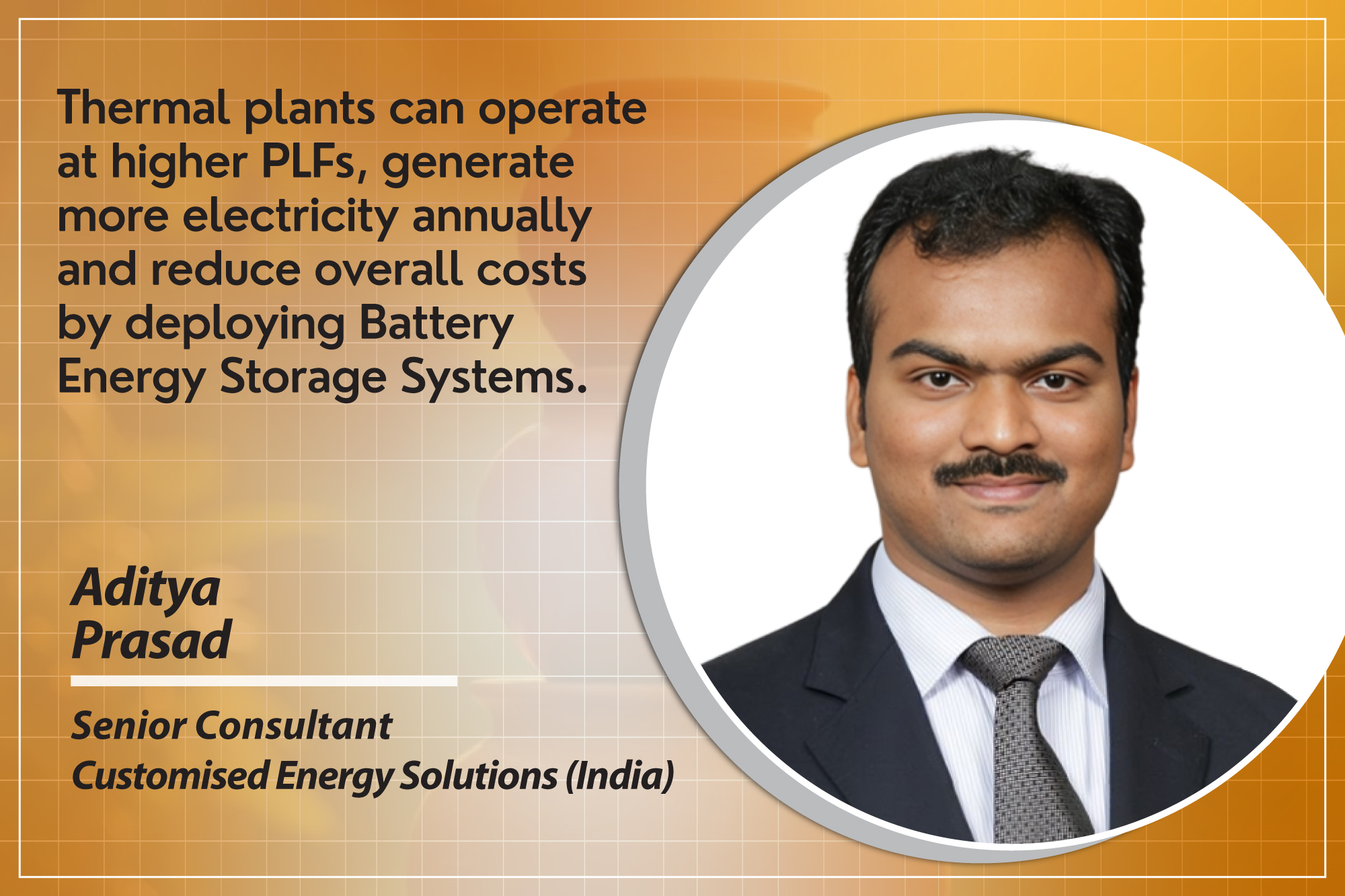Trends powering BESS in India
By Staff Report August 25, 2025 7:59 pm IST
By Staff Report August 25, 2025 7:59 pm IST

Thermal plants can operate at higher PLFs, generate more electricity annually and reduce overall costs by deploying Battery Energy Storage Systems.
Energy storage systems start with cells, each weighing 5–6 kg, that form the basic units. These cells are assembled into packs (500–600 kg each) with sensors and battery management systems (BMS) to ensure safe operation. Around 20–25 packs are mounted on steel racks resembling shelves, integrated with DC cabling, monitoring, fire detection, suppression and HVAC systems to manage heat during charging and discharging. The racks are housed inside container-like enclosures that also include HP panels, cabling, sensors and transformers. These storage containers can draw or inject power into the grid, functioning as complex systems beyond simple batteries. The battery energy storage system is not a simple battery, and it requires various subsystems to work properly.
BESS tenders
Companies like Solar Energy Corporation of India Limited (SECI) are involved in floating tenders, with over 5 GW announced in the first half of this year and an ISDS standard initiated in Andhra Pradesh’s Nandyal district. Traditionally, tendered projects were fully contracted by a single discom, limiting flexibility and excluding participation in energy exchanges or markets. However, the future will shift toward consumer-centric models, enabling peer-to-peer transactions independent of centralised utilities. This evolution is critical for fostering smart, decentralised energy ecosystems where storage and renewable integration enhance efficiency and market-driven operations.
Battery storage in thermal power plants
The government is now focusing on integrating BESS into thermal power stations to improve efficiency. With rising renewable energy injection into the grid, the plant load factor (PLF) of many thermal plants has fallen below 70 percent, reducing efficiency and leaving generators idle for long durations. By deploying BESS, thermal plants can operate at higher PLFs, generate more electricity annually and reduce overall costs. The government expects that electricity costs from such integrated systems will be lower than current levels. NTPC has already floated an EPC tender for 4 GWh of battery storage at its thermal stations in Uttar Pradesh. At the same time, the North Chennai thermal power station is also set to adopt the technology.
Energy management system (EMS)
The Indian government has mandated the use of indigenous energy management systems (EMS) in all storage projects seeking viability gap funding (VGF), a central scheme launched in 2023. The initiative aims to enhance the commercial feasibility of energy storage in India, with applicants eligible for grants of up to 30 percent of capital expenditure.An EMS is software that optimises storage assets, controlling charging and discharging through advanced algorithms to maximise efficiency. Traditionally, Chinese vendors supplied storage containers and power converters bundled with their proprietary EMS, but the new rule opens opportunities for Indian integrators and EMS providers. A key advantage is data security: storage assets generate billions of data points annually, often transmitted to foreign data centres. Indigenous EMS ensures that this critical data remains within national boundaries, which enables secure processing and analysis.
Meanwhile, technology advancements are boosting container capacity. For example, a 20-foot container with 314 Ah cells stores about 5 MWh, while one with 1175 Ah cells packs 6.25 MWh.
Business operating system
The energy storage capacity is increasing and will utilise the Business Operating System (BOS), which means the cost of BOS will decrease from a kilowatt-hour perspective. This is how it reduces the cost of content and the price of each container. Also, the number of containers required for project developers has fallen. In a hypothetical scenario, installing 75 megawatt hours of capacity using the first solution may require 15 containers. In contrast, the second option may only require 12 containers, resulting in reduced land requirements and development costs for developers.
The reduced cost of energy storage capacity may be found or passed on to consumers as well. That is positive, but there are certain complications, such as the first solution being 40 tons, whereas the second is 50 tons. Handling heavier containers is tricky and may require specialised cranes or handling equipment. And as far as integrators are concerned, they are working with project developers to find solutions and handle the equipment seamlessly.
*****************************
We use cookies to personalize your experience. By continuing to visit this website you agree to our Terms & Conditions, Privacy Policy and Cookie Policy.